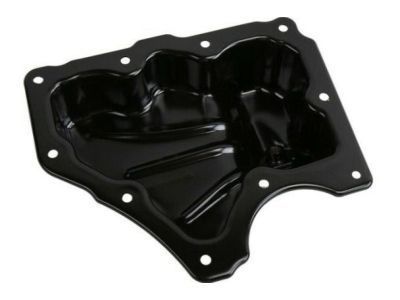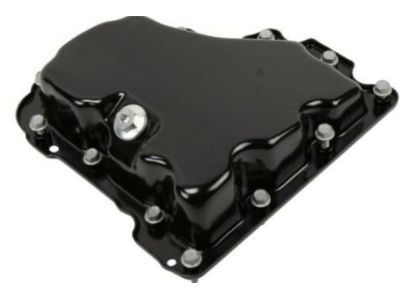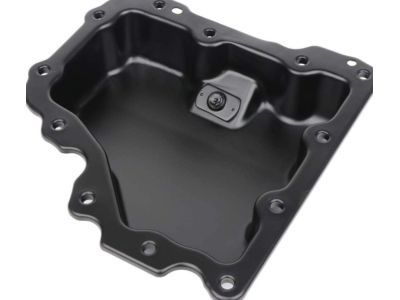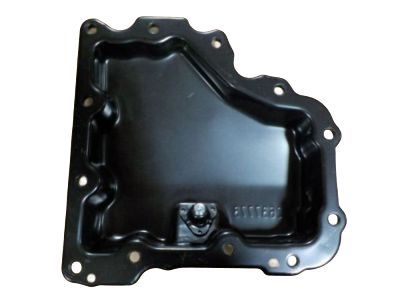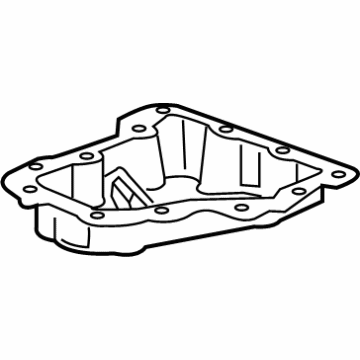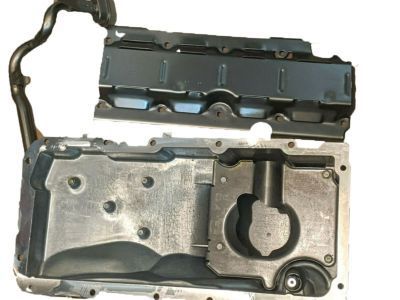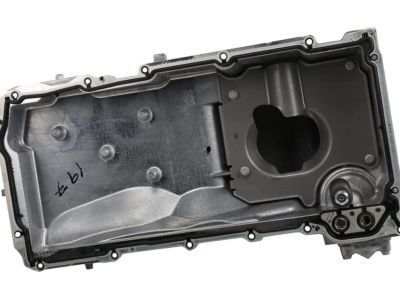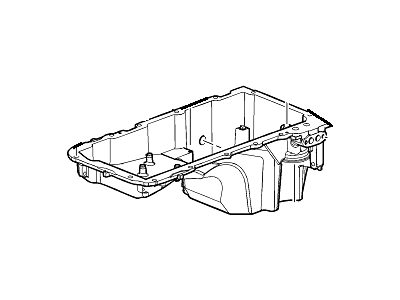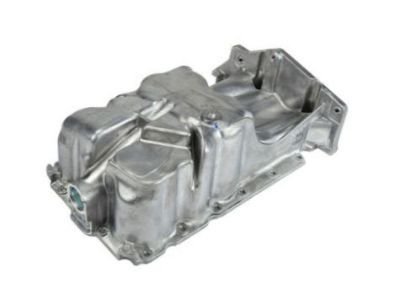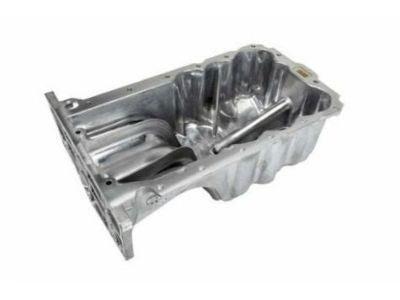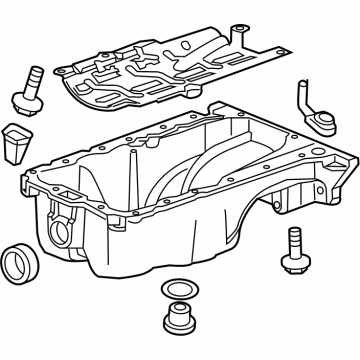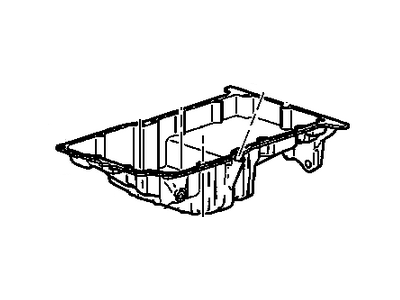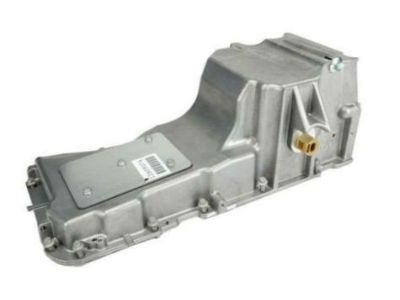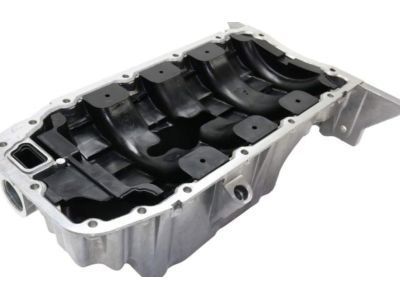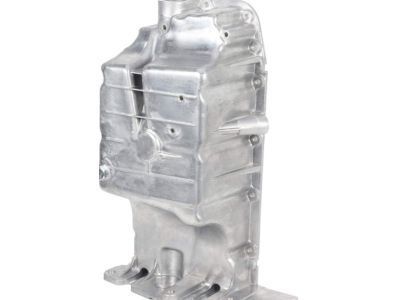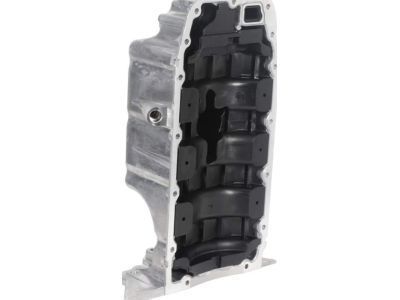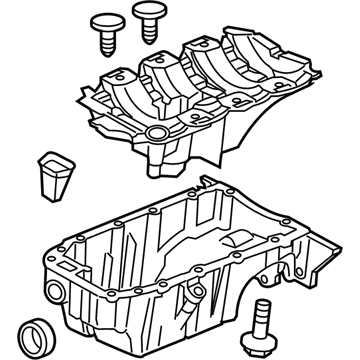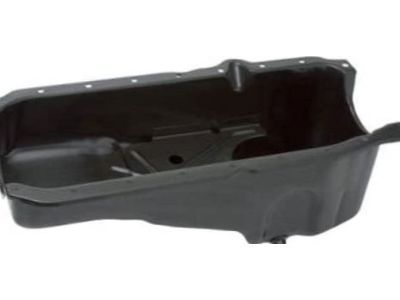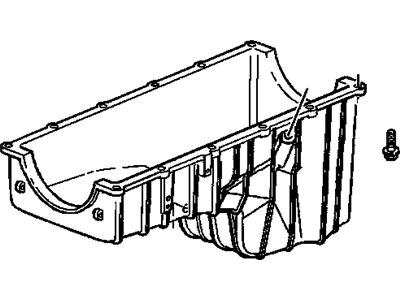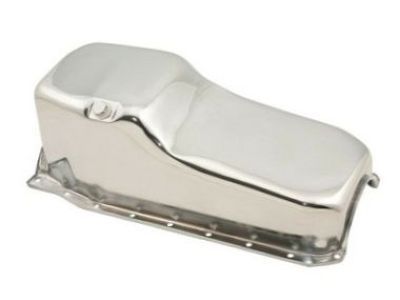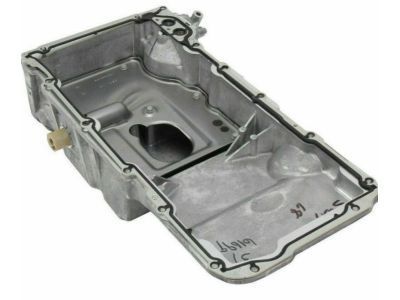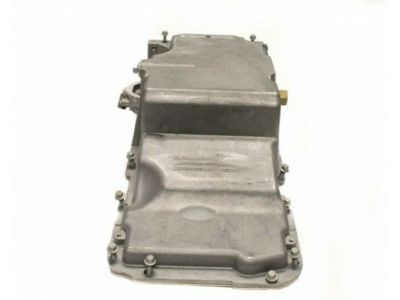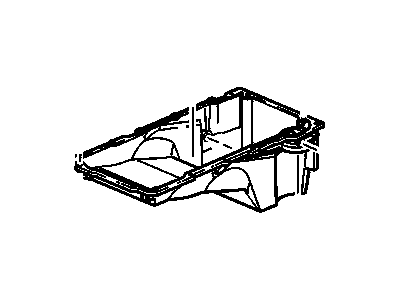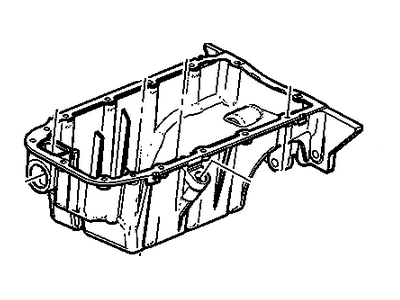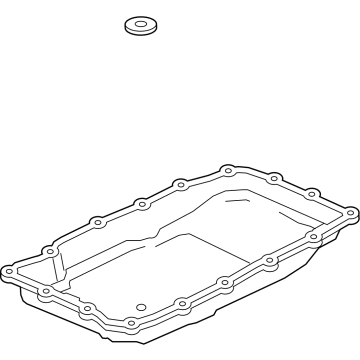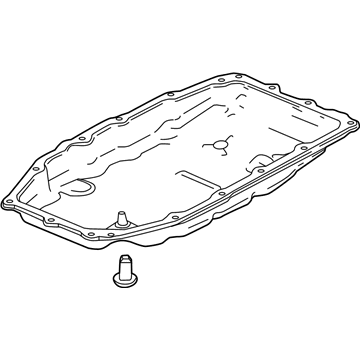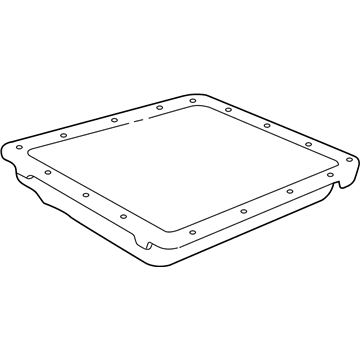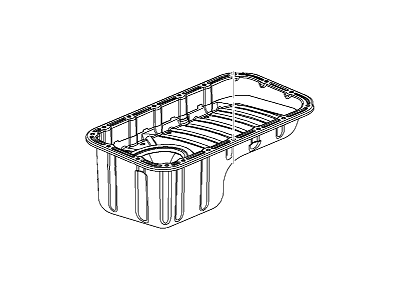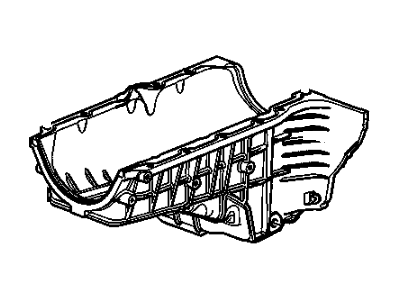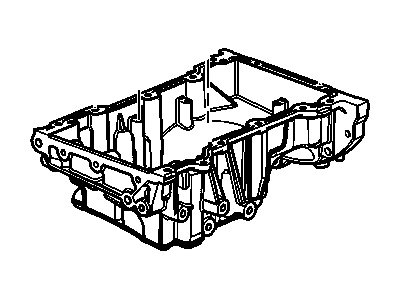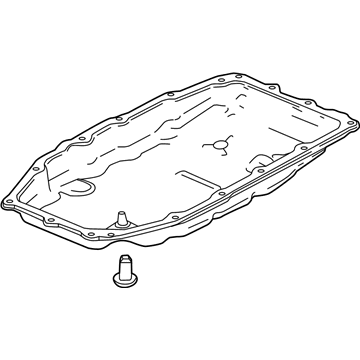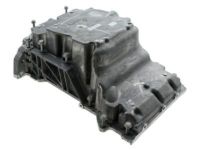
My Garage
My Account
Cart
Genuine Chevrolet Oil Pan
Oil Drain Pan- Select Vehicle by Model
- Select Vehicle by VIN
Select Vehicle by Model
orMake
Model
Year
Select Vehicle by VIN
For the most accurate results, select vehicle by your VIN (Vehicle Identification Number).
209 Oil Pans found
Chevrolet Lower Engine Oil Pan
Part Number: 12669909$48.72 MSRP: $83.30You Save: $34.58 (42%)Ships in 1-2 Business DaysProduct Specifications- Other Name: Pan Lower Oil, Pan Lwr Oil; Oil Pan
- Position: Lower
- Replaces: 12659686, 12623115
Chevrolet Pan Assembly, Lower Oil
Part Number: 12637773$37.98 MSRP: $65.49You Save: $27.51 (43%)Ships in 1-2 Business DaysProduct Specifications- Other Name: PAN, Engine Oil; Lower Oil Pan, Oil Pan
- Position: Lower
Chevrolet Pan Assembly, Oil
Part Number: 12640746$224.03 MSRP: $383.11You Save: $159.08 (42%)Ships in 1-2 Business DaysProduct Specifications- Other Name: PAN, Engine Oil; Oil Pan
- Replaces: 12627903, 12619776
Chevrolet Pan Assembly, Oil
Part Number: 25200829$127.73 MSRP: $203.76You Save: $76.03 (38%)Ships in 1-2 Business DaysProduct Specifications- Other Name: Oil Pan
- Replaces: 25196123, 55573111, 55568035
Chevrolet Pan,Oil
Part Number: 12601240$154.90 MSRP: $267.21You Save: $112.31 (43%)Ships in 1-2 Business DaysProduct Specifications- Other Name: PAN, Engine Oil; Oil Pan
- Replaces: 12578193
Chevrolet Pan Assembly, Oil
Part Number: 12609074$215.14 MSRP: $367.87You Save: $152.73 (42%)Ships in 1-2 Business DaysProduct Specifications- Other Name: PAN, Engine Oil; Oil Pan
- Replaces: 12594603
Chevrolet Pan Assembly, Oil
Part Number: 25194722$244.23 MSRP: $417.61You Save: $173.38 (42%)Ships in 1-2 Business DaysProduct Specifications- Other Name: Oil Pan
- Replaces: 55572041, 55581970
Chevrolet Pan,Oil
Part Number: 12557558$174.95 MSRP: $301.79You Save: $126.84 (43%)Ships in 1-3 Business DaysProduct Specifications- Other Name: PAN, Engine Oil; Oil Pan, Oil Pan Gasket
- Replaces: 12528916
Chevrolet Pan Kit, Oil(W/Gasket)
Part Number: 12528916$174.95 MSRP: $301.79You Save: $126.84 (43%)Ships in 1-3 Business DaysProduct Specifications- Other Name: PAN, Engine Oil
- Replaced by: 12557558
Chevrolet Pan,Oil
Part Number: 12628771$324.36 MSRP: $559.52You Save: $235.16 (43%)Ships in 1-2 Business DaysProduct Specifications- Other Name: PAN, Engine Oil; Oil Pan
- Replaces: 12558762, 12598151
Chevrolet Pan,Oil (W/Filt Bypass)
Part Number: 12579273$312.05 MSRP: $538.29You Save: $226.24 (43%)Ships in 1-2 Business DaysProduct Specifications- Other Name: PAN, Engine Oil; Oil Pan
- Replaces: 12573695, 12560393
Chevrolet Pan Assembly, Oil
Part Number: 25200508$91.74 MSRP: $158.32You Save: $66.58 (43%)Ships in 1-2 Business DaysProduct Specifications- Other Name: Oil Pan
- Replaces: 55355007
- Product Specifications
- Other Name: Oil Pan, Transmission Pan
- Replaces: 24293671
- Product Specifications
- Other Name: Oil Pan, Transmission Pan
- Replaces: 24290872, 24293672
Chevrolet Pan Assembly, A/Trns Fluid
Part Number: 24045035$37.46 MSRP: $64.61You Save: $27.15 (43%)Ships in 1-2 Business DaysProduct Specifications- Other Name: Oil Pan, Transmission Pan
- Replaces: 24273680, 24272989, 24278774, 24274614
Chevrolet Pan Assembly, Oil
Part Number: 25189002$46.92 MSRP: $113.64You Save: $66.72 (59%)Ships in 1-3 Business DaysProduct Specifications- Other Name: PAN, Engine Oil; Oil Pan
Chevrolet Pan Assembly, Oil
Part Number: 93800961$140.50 MSRP: $242.38You Save: $101.88 (43%)Ships in 1-2 Business DaysProduct Specifications- Other Name: PAN, Engine Oil; Oil Pan
Chevrolet Pan Assembly, Oil
Part Number: 12666371$186.41 MSRP: $297.31You Save: $110.90 (38%)Ships in 1-2 Business DaysProduct Specifications- Other Name: PAN, Engine Oil; Oil Pan
- Replaces: 12648946
Chevrolet Pan Assembly, Oil
Part Number: 12667040$324.79 MSRP: $555.36You Save: $230.57 (42%)Ships in 1-2 Business DaysProduct Specifications- Other Name: Oil Pan
- Replaces: 12666375, 12649901
Chevrolet PAN ASM-A/TRNS FLUID
Part Number: 24045034$40.72 MSRP: $69.63You Save: $28.91 (42%)Ships in 1-2 Business DaysProduct Specifications- Other Name: Oil Pan, Transmission Pan
- Replaces: 24274734, 24274616
| Page 1 of 11 |Next >
1-20 of 209 Results
Chevrolet Oil Pan
At GMPartsGiant.com, we offer an extensive inventory of genuine Chevrolet Oil Pans at competitive prices in the market. All our OEM Chevrolet Oil Pans are backed by the manufacturer's warranty and will be shipped promptly to your doorstep. Rest assured, our hassle-free return policy is designed to support you throughout your shopping experience!
Chevrolet Oil Pan Parts Questions & Experts Answers
- Q: How to properly disconnect and reinstall the oil pan in four cylinder engine on Chevrolet Astro?A:Disconnect the cable from the negative battery terminal, ensuring to disable the anti-theft feature on models equipped with such systems before disconnecting the battery. Raise the vehicle and support it securely on jackstands. Drain the engine oil and remove the oil filter. Disconnect the exhaust pipe at the manifold and hangers, tying the system aside. Remove the starter and the bell housing dust cover. Detach the oil pan by removing the bolts, taking care not to pry between the block and pan to avoid damaging the sealing surfaces, which could lead to oil leaks; if the pan is stuck, use a block of wood and a hammer to dislodge it. Use a scraper to remove all traces of sealant from the pan and block, then clean the mating surfaces with lacquer thinner or acetone. Apply a 3/16-inch wide by 118-inch thick bead of RTV sealant to the oil pan flange, making the bead 3/8-inch wide by 3/16-inch thick between the bolt holes at the rear end of the pan, and a 1/8-inch bead of sealant to the block at the rear main bearing cap joints and the timing gear cover joints. Install the oil pan and tighten the mounting bolts to the specified torque, starting at the center of the pan and working out toward the ends in a spiral pattern. Reinstall the bell housing dust cover and the starter, then reconnect the exhaust pipe to the manifold and hanger brackets. Lower the vehicle, install a new filter, and add oil to the engine. Reconnect the negative battery cable, start the engine, and check for leaks.
- Q: How to remove and install an oil pan in V6 engine on Chevrolet Camaro?A:Lifting the car and taking off the oil pan In order to take off the oil pan, you should first discharge the battery by detaching the cable from it's negative terminal. Then, next, disconnect the plenum, the intake manifold, the valve covers, and the timing chain cover. Depending on the make of the car remove the engine using a suitable engine support fixture and then remove the front subframe. Now remove the right-side engine mount bracket bolts and the bracket, then the long bolts that hold oil pan to the rear main oil seal housing-some model may be nuts on this. Undo all the remaining bolts that hold the oil pan with the timing cover and engine block apart and pry the oil pan off the engine block in areas noted above that will minimize rustled up pieces of metal. If necessary, you can remove the oil level sensor by rotating it counterclockwise until it comes loose from the oil pan, then undo the retaining bolts of the baffle and take it out also, and the oil pickup oil seal needs to be replaced also. Before installation, clean the surfaces on which the oil pan and engine block will be bolted with brake system cleaner, inspect the oil pump pickup for cracks or leakage and make sure that screen is not blocked or damaged. Replace the oil seal on the oil pickup for the pump, re-torque the bolts in the bottom of the oil pan and fit the baffle. Tap two studs of M8 x 1.25 mm bolts and thread for at least 25 mm while the nut head of the bolts are capped and place the threaded studs on the oil pan bolt holes for the alignment. Use a 1/8-inch wide groove of RTV sealant to the mated surface of the oil pan and to the corners of the timing chain cover and rear main seal housing. Place the oil pan and secure the bolts loosely; also, remove the threaded dowel pins and properly tighten the oil pan bolts with a desired torque sequence. Last of all, put the correct kind and amount of oil, taking action and turning on the engine, then inspect for leakage before returning the car to operation.
- Q: How to remove and install an oil pan in 4.8L,5.3L,6.0L V8 engine on Chevrolet Express?A:To remove the oil pan, start by and unscrew the connection of the cable on the negative terminal of the battery. Lift the car properly with jackstands and drain the engine oil and the oil filter also. After that you will proceed to removing the lower control arm crossmember by pulling it out from below the oil pan using the bolts. Remove the front exhaust pipes by unbolting them from the exhaust manifold and taking them off since they will also interfere with the oil pan. Take off the starter motor and in the case of having, the transmission side covers. Remove the wiring harness bracket from the front of the oil pan and the bracket on the passengers side that secures the transmission oil cooler lines and the wiring to the starter motor. Loosen the bolt which connects the electrical connector to the oil level sensor installed on the lower side of the oil pan on the passenger compartment. Take off the transmission to oil pan bolts. If fitted with an engine oil cooler, then you need to remove the cooler lines and the adapter from the driver's side of oil pan. On models with the 4L80-E automatic transmission, unscrew the torque converter cover bolts and on those that use the 4L60-E automatic transmission dispense with the stud and bolt on the right side. Remove all oil pan bolts, after which the pan has to be lowered from the engine; if necessary it should be banged gently with a rubber mallet to free the gasket and check whether all the bolts are out. For the installation, one has to drill out the rivets that were holding the previous gasket in place and clean the oil pan with solvent. Remove oil pan and clean the mounting surfaces of the oil pan and engine block Using a bead of RTV sealant, treat the mating surfaces of the front and rear covers with the engine block. Operate them to engage and interface the new gasket to the pan, then fit and progressively tighten the bolts affording correct orientation of the oil gallery passages. Check the gap, being the distance of the rear face of the pan to the front face of the transmission bellhousing and if it is satisfactory then tighten the pan bolts/studs in a sequence to the torque setting. If not, secure the two lower oil pan to bell housing bolts and tighten them to lightly in order to pull the oil pan close to the bell housing. Finally, it is necessary to carry out the installation in the reverse sequence, subsequently tightening the oil pan bolts, putting the correct type and amount of oil, starting the engine and checking the damages before returning the car to the operational state.
Related Chevrolet Parts
Browse by Model
Astro Oil Pan Avalanche Oil Pan Aveo Oil Pan Beretta Oil Pan Blazer Oil Pan C10 Oil Pan C1500 Oil Pan C20 Oil Pan C2500 Oil Pan C30 Oil Pan C3500 Oil Pan Cadet Oil Pan Camaro Oil Pan Caprice Oil Pan Captiva Sport Oil Pan Cavalier Oil Pan Celebrity Oil Pan Chevette Oil Pan Citation Oil Pan City Express Oil Pan Cobalt Oil Pan Colorado Oil Pan Corsica Oil Pan Corvette Oil Pan Cruze Oil Pan El Camino Oil Pan Equinox Oil Pan Express Oil Pan G10 Oil Pan G20 Oil Pan G30 Oil Pan HHR Oil Pan Impala Oil Pan K10 Oil Pan K1500 Oil Pan K20 Oil Pan K2500 Oil Pan K30 Oil Pan K3500 Oil Pan Lumina Oil Pan Malibu Oil Pan Metro Oil Pan Monte Carlo Oil Pan Nova Oil Pan Orlando Oil Pan P20 Oil Pan P30 Oil Pan Prizm Oil Pan R10 Oil Pan R20 Oil Pan R2500 Oil Pan R30 Oil Pan R3500 Oil Pan S10 Oil Pan SS Oil Pan SSR Oil Pan Silverado Oil Pan Sonic Oil Pan Spark Oil Pan Spectrum Oil Pan Sprint Oil Pan Storm Oil Pan Suburban Oil Pan Tahoe Oil Pan Tracker Oil Pan Trailblazer Oil Pan Traverse Oil Pan Trax Oil Pan Uplander Oil Pan V10 Oil Pan V20 Oil Pan V30 Oil Pan V3500 Oil Pan Venture Oil Pan Volt Oil Pan
